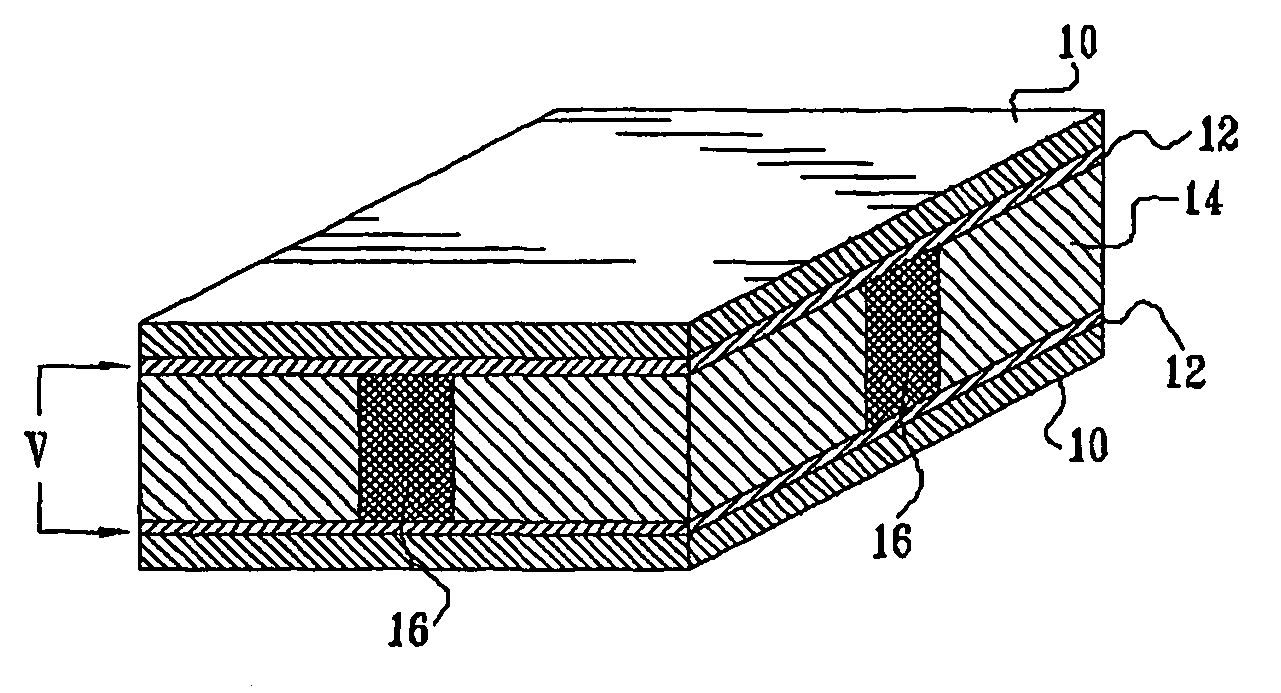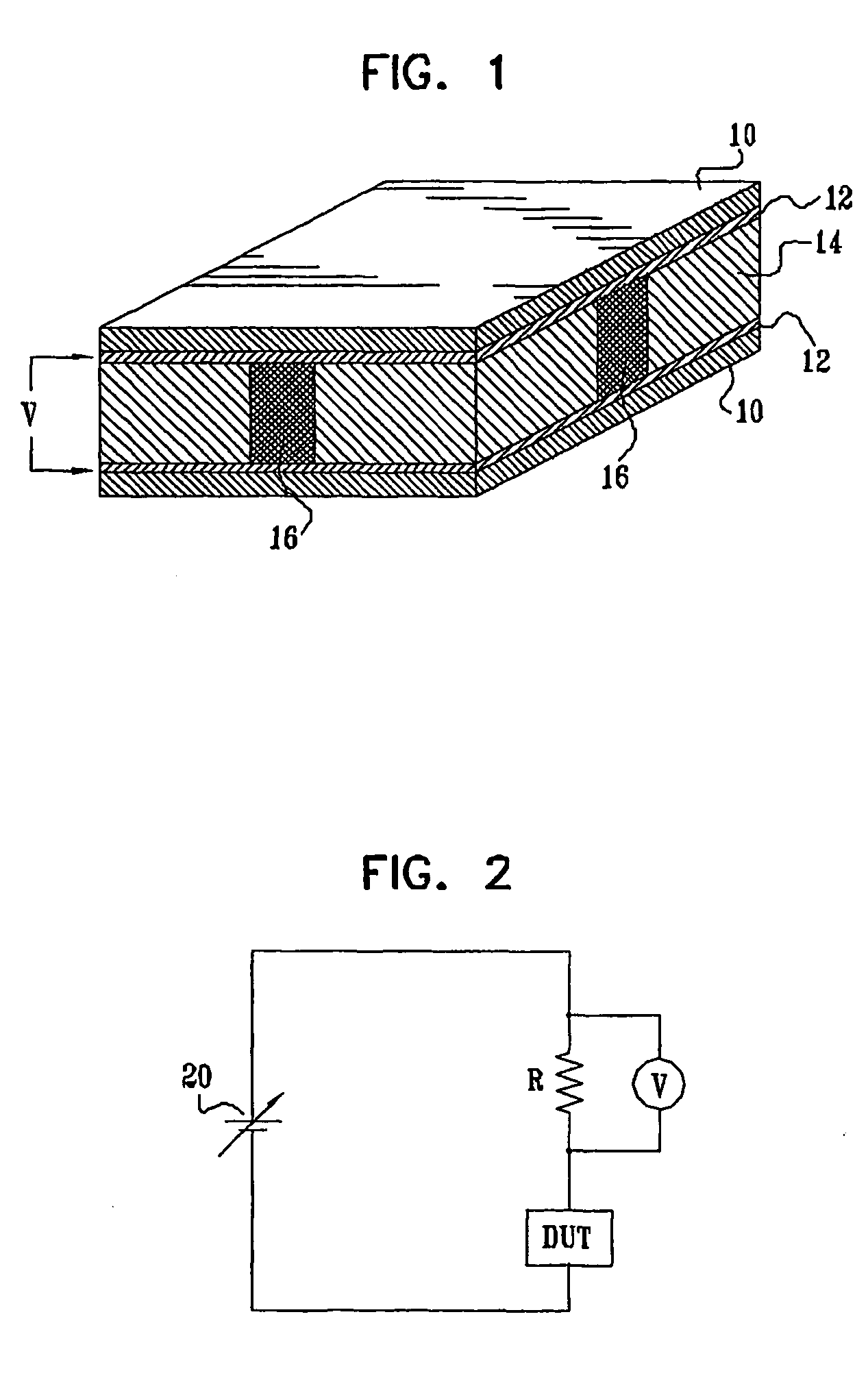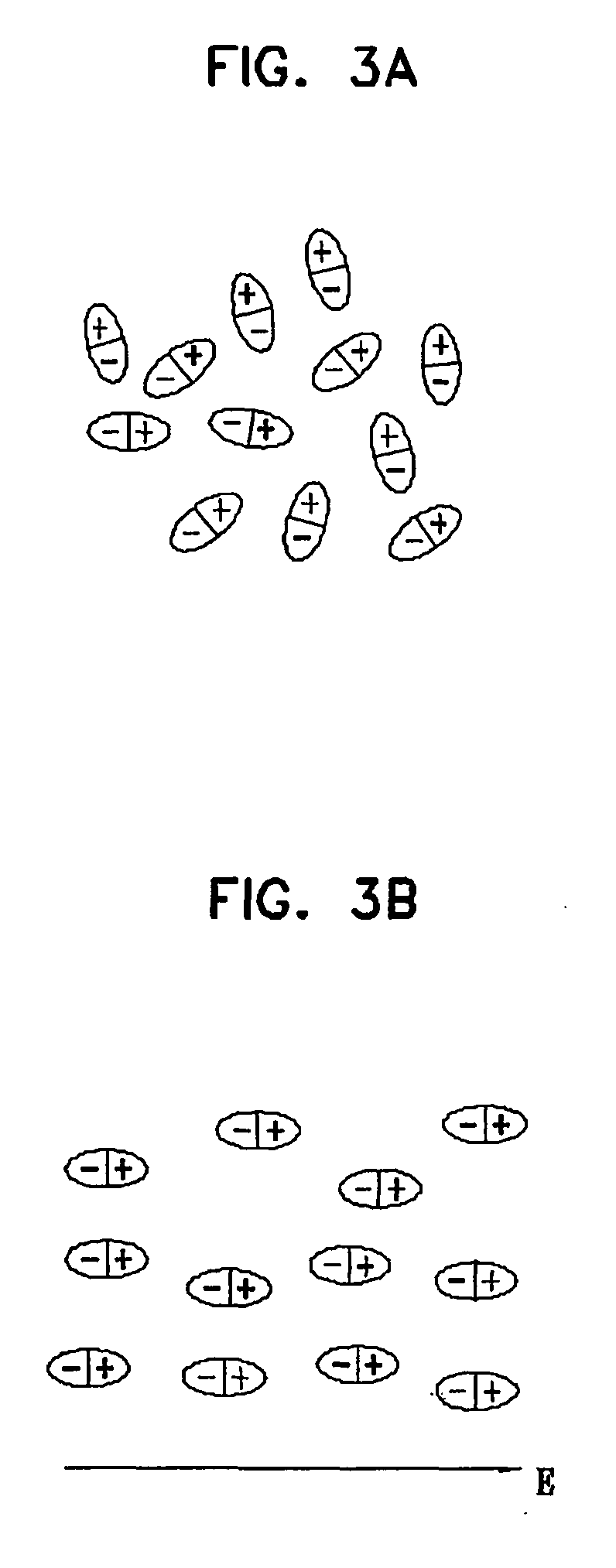However, it would appear from the reported behavior that the switching effect is not always reproducible, and no details of any methods of application are given, nor are the applicants aware of any apparent commercial applications developed from these devices.
The bi-stable latching switches described in the prior art which have found commercial application are generally
solid state
semiconductor devices, such as four leg p-n-p-n devices, and, being multi-layered, are generally relatively complex and hence costly to manufacture and may have low yields.
Such arrays are complex and expensive, thus making the cost of such
active matrix displays comparatively high.
Ferroelectric-based latching switches and liquid crystals are also used in the display industry, but their cost is also high.
However, the performance of passive
liquid crystal displays (LCD's) is noticeably inferior to that of
active matrix LCD's in a number of areas.
The primary reason for the inferior performance of passive LCD's in
flat panel applications, where multiple lines need to be displayed, is a result of the method whereby their pixels are addressed by
multiplexing.
However, in order to achieve such contrast levels when
multiplexing is used, an LCD material having a much steeper characteristic than those of currently available technologies, would be required, and such a material is currently unavailable, with the exception of Ferroelectric
liquid crystal devices, which are expensive, lack gray scale and are difficult to fabricate.
Reading such a passive display with more than about 400 rows using currently available materials is difficult, making such passive displays unsuitable for
high resolution large screen devices, such as computer screens.
For this reason, passive type displays have been limited to simpler displays, such as
hand held type displays, where the maximum number of rows driven is of the order of only 100-200, and the contrast can be compromised.
In such applications, the high cost of using
active matrix TFT displays in order to achieve higher resolution or contrast, is not warranted.
Unfortunately, this configuration is wasteful, both in terms of light utilization, and in terms of space utilization.
Touch screens are used in many current computer-based information systems, especially those whose operation is, by their nature, very user-interface intensive, such as PDAs, automatic cash machines, information-kiosks, computer-based training devices, and computer systems for disabled users who have a difficulty in operating a mouse or keyboard.
Despite being so common, the cost of these touch-sensitive devices has remained high in comparison to conventional keyboard interface equivalents.
The nature of the material used for such curved applications limits the light
throughput.
The antiglare option minimizes glare, but results in a slightly diffuse image light
throughput.
However, because of the nature of its operation, a capacitive touch-screen cannot generally be activated while wearing most types of gloves, which are non-conductive.
When the user touches the glass surface, the
water content of the user's finger in contact with the glass surface absorbs some of the ultrasonic energy, thus damping the
acoustic wave.
Besides the specific disadvantages mentioned above, and those known generally, which are specific to one or another of the touch screen technologies, all of the technologies have two common disadvantages: (i) They all require the use of an additional screen, and of special controllers and drivers for the touch screen panel, thereby increasing the cost of the touch-screen display.
(ii) These additional screens are placed in front of the display, thus lowering its light efficiency.
 Login to View More
Login to View More  Login to View More
Login to View More 


